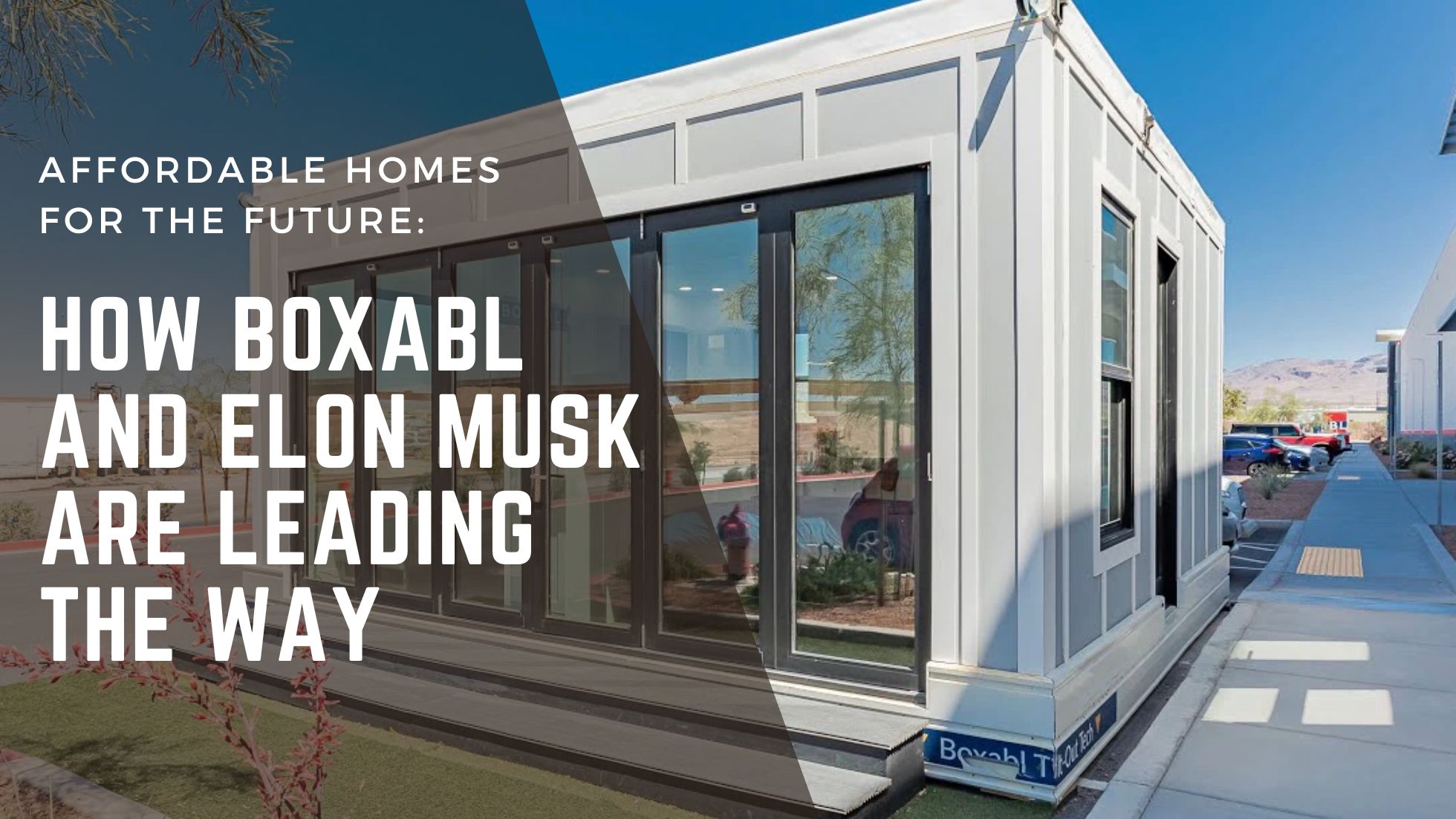
Elon Musk, known for pushing the boundaries of technology and innovation, is now making headlines in the housing market. His involvement with Boxabl, a startup specializing in modular, foldable homes, has sparked widespread interest. With speculations surrounding the idea of a $10,000 home, many are wondering whether this vision can become a reality. Although the current starting price for a Boxabl home is $60,000 (as per the info on the Boxabl website), the potential impact on affordable housing is undeniable. Musk’s involvement suggests that a significant shift in how we approach housing may be on the horizon.
The Origins of Boxabl
Founded by father and son duo Paolo and Galiano Tiramani in 2017, Boxabl was born out of a desire to rethink the housing industry. Their central question: why can’t homes be mass-produced like cars or electronics? This idea led to the development of the Boxabl Casita, a 33.5-square-meter modular home designed for efficiency, sustainability, and ease of assembly. The Casita can be folded for transportation, assembled within hours, and offers all modern home amenities.
The Casita gained significant attention when it was revealed that Musk had purchased one to use as a guest house near SpaceX’s launch site in Boca Chica, Texas. Despite speculation, Musk clarified that he doesn’t live in the tiny house but appreciates its innovative design and functionality. This only fueled interest in Boxabl’s potential to offer affordable housing solutions at scale.
Breaking Down the $10,000 Myth
The concept of a $10,000 house is exciting—transformative, even—but it’s important to clarify that a Boxabl home currently starts at $60,000. Early discussions and rumours about a $10,000 home stemmed from the company’s ambitious goals to reduce housing costs drastically. While the dream price hasn’t yet been achieved, the current cost still positions Boxabl as an affordable option compared to traditional housing models.
Why Modular Homes Matter
Modular homes like the Boxabl Casita represent a significant shift in housing construction. Traditional home building is slow, expensive, and labour-intensive, often contributing to rising housing costs. In contrast, modular homes are prefabricated in factories, which means they can be mass-produced quickly and cost-effectively. This method also reduces the environmental impact of construction by minimizing waste and allowing for better energy efficiency.
The Boxabl Casita embodies this shift with its smart, modular design. The home’s foldable structure allows it to be transported easily, and once on-site, it can be unfolded and set up in a matter of hours. The unit is highly durable and built with materials like Magnesium Oxide (MGO), which offers superior resistance to fire, mould, water, and insects. The Thermoplastic Polyolefin (TPO) roof also ensures energy efficiency and durability, allowing the house to withstand various weather conditions.
Energy Efficiency and Sustainability
A key aspect of the Boxabl home is its emphasis on energy efficiency. The Casita is designed with high R-value insulation, reducing energy consumption and keeping the home comfortable in hot and cold climates. Its windows are energy-efficient, and the home can be equipped with solar panels, allowing homeowners to generate their own power and even live off-grid.
For those interested in sustainable living, the Boxabl home offers a solution that minimizes environmental impact while still providing modern comforts. The use of LED lighting, energy-efficient appliances, and a tightly sealed building envelope means lower utility costs and a smaller carbon footprint.
Interior and Layout
The interior of the Boxabl Casita is a testament to the company’s commitment to maximizing space without sacrificing comfort. The home features a living area, kitchen, bedroom, and bathroom, all designed to offer the same amenities as a traditional home but within a compact, efficient layout.
The kitchen comes fully equipped with modern appliances, including a refrigerator, stove, oven, microwave, and dual sinks, providing plenty of functionality in a small space. The living area includes a multifunctional sofa that can double as a bed, while the bedroom features a queen-size Murphy bed that folds up to free space during the day. Despite its modest footprint, the bathroom offers a shower, toilet, and vanity, making it feel like a full-sized home.
One of Casita’s standout features is its attention to detail in its design. The wide plank composite flooring, sleek finishes, and floor-to-ceiling glass doors make the home feel modern and luxurious, even within its compact 33.5 square meters.
The Role of Elon Musk
Elon Musk’s involvement with Boxabl goes beyond a business decision. It’s an extension of his vision for sustainable living. Musk has long been focused on solving some of the world’s biggest challenges, from transitioning to renewable energy with Tesla to exploring life beyond Earth with SpaceX. Housing is no exception.
The Boxabl Casita aligns with Musk’s commitment to reducing humanity’s environmental footprint while addressing critical issues like housing affordability. The ability to mass-produce affordable and sustainable homes could be a game-changer for low-income individuals, first-time homebuyers, and even those looking for temporary housing solutions.
Musk’s decision to live in a smaller, more efficient space underscores his belief in the potential of sustainable housing models. While he clarified that he doesn’t live in the Boxabl Casita full-time, his use of it as a guest house demonstrates his confidence in the product’s innovation.
Overcoming Challenges
Despite the excitement surrounding Boxabl, the company must overcome challenges to make its vision a reality. Zoning laws and building codes can vary widely between regions, and modular homes must meet these regulations to be legally deployed.
The current $60,000 price is significantly more affordable than many traditional homes, scaling production and reducing costs will be critical if Boxabl aims to reach the $10,000 price point.
There is also the issue of public perception. Some people still associate modular homes with lower quality or temporary structures, and Boxabl will need to demonstrate that the Casita offers long-term durability and comfort comparable to traditional homes.
The Future of Affordable Housing
Boxabl’s Casita represents a step toward solving the affordable housing crisis, but it’s also just the beginning. With Elon Musk’s backing and the company’s innovative approach to modular design, there’s potential for even more affordable and scalable housing solutions in the future.
While the $10,000 price point remains a goal, the $60,000 starting price for a Boxabl home still makes it a competitive option in today’s market. As production scales and technology improves, costs may come down, making modular homes like the Casita accessible to an even broader audience.
The future of affordable housing may very well lie in the hands of companies like Boxabl, who are rethinking how homes are built, delivered, and lived in. Whether it’s providing solutions for urban housing shortages, disaster relief, or even space habitats, Boxabl’s modular homes are set to make a significant impact on how we live.
